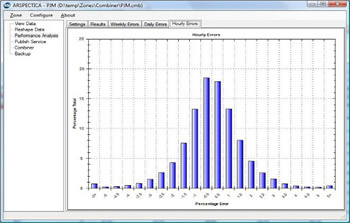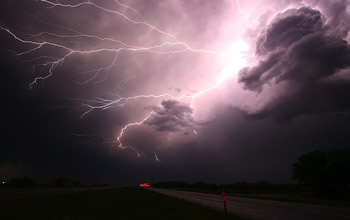 A Look Ahead
A Look Ahead
Short-term load forecasting took a dramatic leap forward in the late 1970’s and early 1980’s with the introduction of statistical-based techniques. Starting with linear regression and later with neural networks, they replaced expert judgment supported by similar-day algorithms. Presently, with the growth of renewable resources and the maturity of real-time power markets, there is an ever-increasing need for improved load forecasting accuracy. With no new modeling breakthroughs envisioned, the challenge is how to build better model specifications. So, we focus on 3 areas of research designed to improve forecast accuracy: (1) treatment of Weather, (2) Modeling, and (3) inclusion of Renewables.
Forecastive’s Science
By adapting our neural network parameters to a client’s historical forecasting errors on each input data set, our LoadVISION system gradually “learns” the best weighting of that client’s parameters. LoadVISION can even determine important relationships in client data that are completely invisible to its users.
Forecastive’s innovative tools, and expertise in forecasting ‘Special Days’ (holidays, sudden weather changes, extreme events, etc) have also gained tremendous interest.
Superior Accuracies
We’re confident you’ll experience better Accuracies from Forecastive’s LoadVISION forecaster, than any other System/Vendor available today.
Please review the following recent PJM Zone results to verify our superior accuracies are even much better than what PJM itself forecasts for their own zone! PJM represents 15% of all total USA Electrical usage, and is the largest Zone by MW’s in the United States.
MAPE Comparisons: ARSPECTICA vs. PJM
We have completed a detailed comparison study using the published PJM data on actual loads for its 9 zones plus the full PJM-RTO zone. Since PJM publishes on a daily basis its own hourly forecasts for the next 7 days, we download these forecasts for a period of 4 weeks. Simultaneously, LoadVISION was running daily using the same input load data generated by PJM and published on their website. The period was 4 weeks (February 8 – March 7, 2013) and here are some of those results:
All hours MAPE’s for 2-Days Ahead Forecasts
| PJM 2 Days Ahead |
LoadVISION 2 Days Ahead |
LoadVISION improvement |
|
| PJM RTO | 1.45% | 1.31% | 9.7% |
| Average 9 Zones: | 2.49% | 2.35% | 5.6% |
| Weighted Average: | 2.42% | 2.27% | 6.2% |
 Importance
Importance
The deregulation of energy markets has propelled load forecasting’s impact and importance, as power providers must be more attuned to efficiency factors affecting their operations, while power generation, transmission and distribution companies deal increasingly with issues of reliability, cost effectiveness, supply and demand imbalances, as well as unexpected weather changes.
Weather is often the main factor causing unreliability, decreasing the efficient supply of power, while adding substantial costs. Unpredicted weather shifts may result in over or under estimated forecast demand — this is why we have incorporated directly into LoadVISION itself, our own custom-optimized Weather Model system. So the financial impact of combined factors is seen in energy pricing, scheduling, risk management and ultimately, profitability.
Load forecasting is vitally important for utilities during peak situations (where energy prices can increase by a factor of 10 or more). Accurate forecasts also provide improvement to network reliability, and reduced occurrences of equipment failures and blackouts. Load forecasting is also important for contract evaluations, and for sophisticated energy pricing securities (i.e. energy trading). There is a trend toward real-time pricing and sub-hourly markets, making load forecast accuracy even more critical.
What Are You Waiting For?
Request a Demo, and inquire about our Pilot Program (full use of LoadVISION) for approved candidates.
Request a Demo